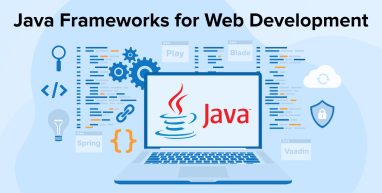
Java is almost every developer’s favorite object-oriented language for many reasons. The reasons can be it is comparatively simpler to code, or because it is robustly reliable and secure. Let us not limit our thoughts because Java is capable of facilitating numerous simplified coding options with reusable codes. It allows you to write once and run anywhere. One of the many reasons for opting for Java is that it offers a plethora of other Java frameworks.
In this blog post, we have decided to put light on some of the most popular Java frameworks. While there are other frameworks than these twelve, the ones presented and studied stand out from the list. Some of the criteria considered for qualifying include features and convenience of use.
1. What are Java Frameworks?
Java is one of the most popular and the oldest programming languages, it is mostly preferred by the majority of businesses. Though it is the oldest among other languages, still there are many developers who are not clear about what it means. So, to make users understand simple Java frameworks, we can say that they are pieces of software that are designed to make Java programming easier for java development companies. They come in prewritten code sets that you can add to your own development code set to add personalized solutions to problems.
In much better words, if we were to describe Java Framework as a set of predefined classes and procedures that are used to process input, control hardware devices, and communicate with system software. It functions as a skeleton, assisting the developer in creating an application by writing codes on their own.
Java Frameworks allow users to be as creative as they can, given how unique each coder is, you’d anticipate numerous variations of such useful frameworks to exist. That stated, let’s take a look at some of the most popular Java frameworks in this blog.
It varies entirely and is dependent on the individual to select one framework over the others. For the most part, that may be determined by how much flesh the framework gives as you begin new projects. This blog is all set to explain to you the major selection points where you can use different tools of the framework and make your solution different from others.
2. Why Use Java Frameworks?
It’s time-consuming to build big Java applications from the ground up, but integrating a framework into your stack can speed up the process. Data retrieval, security, and privacy are just a few of the numerous app-wide features that are essential. To avoid having to constantly start from scratch with new projects, the finest Java frameworks already have many of these functionalities built in.
They also supply a software architecture to aid in the development of an organized program. Due to the dynamic nature of these frameworks, you can be certain that your Java code will always be up-to-date and well tested.
In addition, growing your team is less of a challenge because you can find engineers with expertise in both Java and your framework of choice. Most Java frameworks additionally provide their own environment, which often consists of libraries, instructional materials, assistance forums, and social media networks that may be quite useful during the development process.
3. Best Java Frameworks
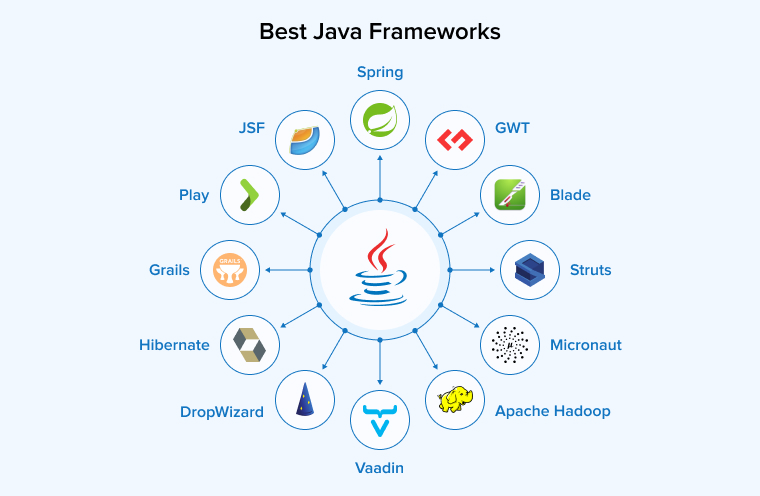
Even while Java frameworks are great for making code easier, you still must know your way around all its best frameworks to set your preference high. Thus, in this section, you’ll be introduced to some of the best Java frameworks to use in your web development.
3.1 Spring

One of the leading names in Java frameworks is Spring. Spring framework is the renowned and most popular Java framework that comes with some common requirements fulfilling all the basic necessities of app development. It is an open-source framework used for Enterprise applications. There are numerous reasons for businesses to make “Spring” their ideal choice for app development.
Spring java framework is a popular Java EE framework that is both strong and lightweight and can be triggered without using an application or web server. Spring framework makes Java easy, contemporary, productive, reactive, and cloud-ready, according to the developers. Moreover, it ensures backward compatibility and testability of the code. Its dependency injection and aspect-oriented programming capabilities are well-known. In truth, it is a collection of frameworks that enable you to do jobs of any complexity, from database work to testing.

The active community of Java developers can choose from the two options available for them in the Spring framework; they can either choose Spring MVC or choose Spring boot as their suitable Java framework. One of the strongest aids of using the Spring framework is you never lose control over your framework because of the IOC- inversion of control feature of this Java framework.
3.2 Hibernate
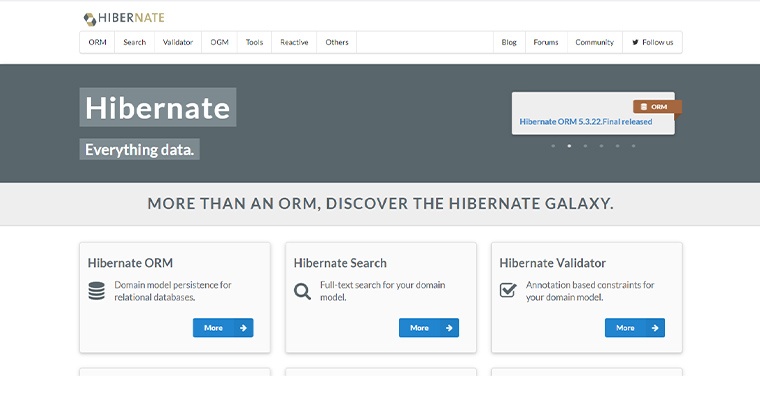
Another important name in the list of Java application frameworks is Hibernate. Most developers are specifically inclined towards choosing Hibernate because of its stability and communication. It is a free and open-source framework.
Hibernate’s main configuration file is hibernate.cfg.xml. It includes information about mapping Java classes with database configuration. Hibernate framework is a reliable object-relational mapping framework that allows the Java programming language to communicate more effectively with relational database management systems. Although you can’t consider Hibernate as a full-stack framework, it is not similar to the regular database. It is an Object-Relational-Mapping (ORM) database for Java applications; it is the implementation of Java Persistence API (JPA). It is similar to SQL, thus queries in Hibernate are known as HQL (Hibernate Query Language). Hibernate is a framework that helps you overcome Java’s mismatch difficulties. It aims for persistence, which means that the data created/used by the application should outlast the process that produced it.
Generally, when you use object-oriented languages, it happens that the relation of the object is non-matching. Say for instance one is object-oriented and another one is relational-database related so the functional procedure for both of them is different. This can often lead to problems. The developed platform needs to be subtle and in-stream with other OO languages and Hibernate offers your business the ability to manage multiple mismatch problems in a go.
Going back to the initialization, Hibernate was originally designed to function with databases and map Java objects to database tables. But it has evolved with time and its recent versions can now handle NoSQL datastores as well. They also encompass powerful development tools such as a mapping editor, a Hibernate console, and a database reverse engineering tool.
3.3 Blade
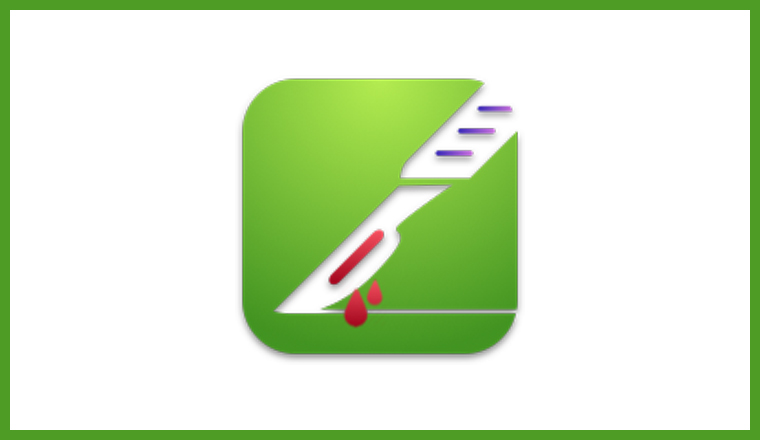
The third one in the list of popular Java frameworks is Blade which is lightweight and blazing fast for creating unique user interfaces and developing java based web applications. Web developers will find all their tasks during the creation of the Maven project sections. Without adding multiple dependencies or an external server, you can easily start your project which makes the web API cleaner. Once you initialize the project, you are good to go. The function of Blade Java Framework is similar to the React Native framework, which is in fact simpler and more resilient.
When you use the Blade framework, you can work faster without getting dependent on existing backend java code. Its web application server is quite handy that keeps the web development interface engaging and the environment light. The most dominating aspect of this framework is MVC.
3.4 Struts
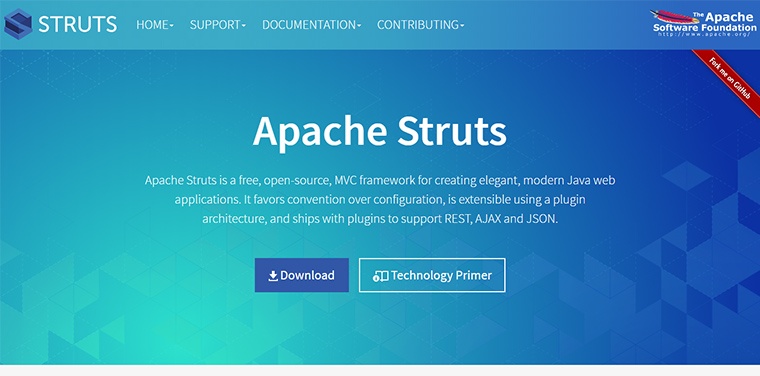
Another solid open-source java application framework is the Struts java framework for web applications Apache Struts. It is backed up by the Apache Software Foundation (ASF). This is one of those frameworks that use JSP API extension and follows the component-based MVC framework (Model-View-Controller) model. The purpose of designing this is to obtain and extend the Java Servlet API properties and features, as it will make things simpler for the developers. In a standard servlet-JSP strategy, once the submission of the information is completed on the form the information is delivered to a servlet for processing. The other way is it could be done in the control and passed to the next JSP (Java Server Pages – where you may write Java code in HTML).
Struts have the View, Controller, and Model (data) separated. This provides the connection between them via the struts-config.xml configuration file. It has a lot of features and is available in two versions: Struts 1 and 2. Struts 2, which effectively expands the original version with OpenSymphony web framework tools. That implies you may use new technologies to increase the functionality of your Java applications, such as new JavaScript frameworks or Java web frameworks.
3.5 Google Web Toolkit [GWT]
![Google Web toolkit [GWT] Google Web toolkit [GWT]](https://www.tatvasoft.com/outsourcing/wp-content/uploads/2021/10/gwt-1.jpg)
As per the name of this fifth high-performance java framework, Google developed the Google Web Toolkit (GWT). Google also had its hands-on with a web development framework for Java. GWT Google web toolkit is fully featured and rich for all types of internet applications using Google APIs. What makes the GWT framework stand apart from others in the list is its ability to convert Java code into Javascript code as well as enable customization options. This feature of Google Web Toolkit saves a lot of time and you can easily get to final results without investing much time in testing apps.
We can create highly performing web applications in less time with this open-source collection of technologies. Because Google’s web toolkit is compatible with various web development frameworks, you may simply merge your existing codebase with it. The Eclipse IDE, Maven, and Junit are all compatible with it.
In this lightweight framework, there are three primary components namely the JS compiler that translates java codes into scripts. The last component manages all the UI components, history management, and many more features.
3.6 Existing Backend Tool-JSF (JavaServer Faces)
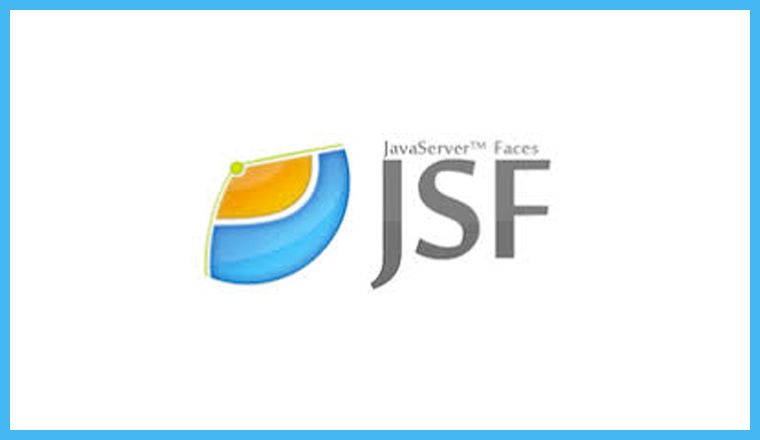
Often with Java applications, developers face changes with backend developers to get the frontend web app development right. But this Oracle-built, robust framework is responsible for developing stunning “frontends” for Java applications. Java Server Faces is a Java framework for designing online applications with component-based user interfaces. It’s an official standard of the Java Community Process (JCP) initiative.
JSF is based on the MVC software design pattern and is packed with some reusable components and it works on the basis of component-based MVC to develop a server-side application. The fundamental goal is to encapsulate several client-side technologies such as CSS, JavaScript, and HTML, allowing developers to design User Interfaces without having a thorough understanding of any of these technologies. JSF is quite similar to Struts. You can simply drag and drop reusable UI components and concentrate on the details of their presentation layer.

You can also integrate the JSF with AJAX-enabled components, this will enhance the customer experience and add Ajax events for validations. The larger portion of JSF contributes to J2E and helps you create unique and cutting-edge web applications.
3.7 Vaadin
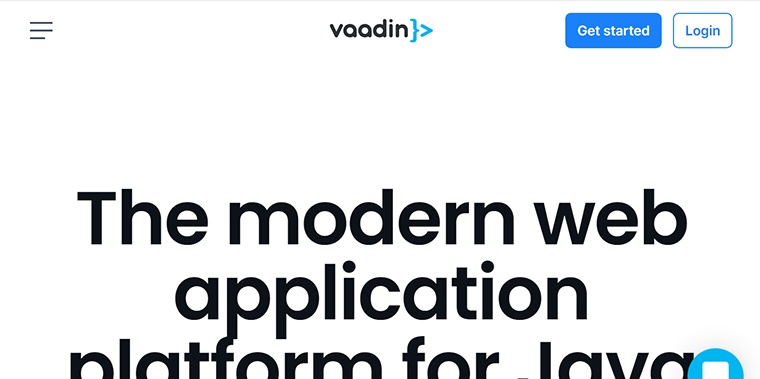
Another essential one in the list of Java frameworks is the Vaadin Java framework. It’s an open-source platform with a Java web framework and a set of web components. Vaadin is a lightweight Java Framework that allows developers to build complete Java applications and desktop and mobile interfaces. This type of framework has an in-built UI component that contributes to building a new-edge web application framework. Vaadin is a JavaScript framework for cross-platform development that lets you package native mobile apps, web applications, and even desktop apps with a single codebase. Vaadin Flow handles routing and server client communication.
Vaadin’s cross-platform portability allows users to develop frameworks for the web in a quick and hassle-free manner. It offers a platform for streamlined Java development. The web app development performed here is responsive, beautiful, and interactive. Also, with Vaadin, you have all the access to the web server, java server, and inbuilt Java beans to validate its features. Data visualization is another aspect of Vaadin that contributes to the success of your developer app.
3.8 Apache Hadoop
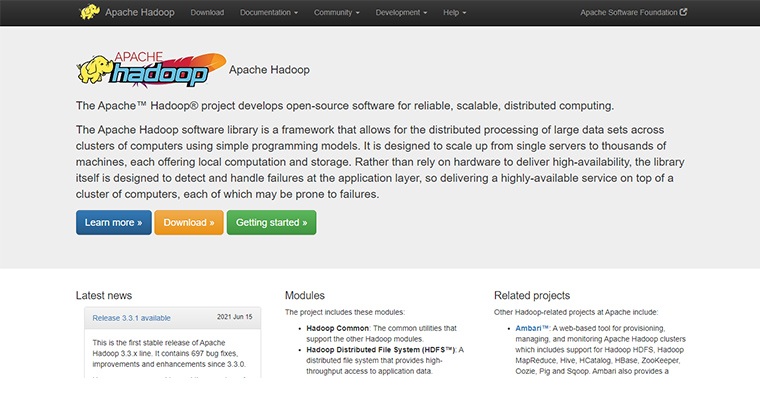
Apache Hadoop is a software framework that uses the MapReduce programming methodology. We must know that it is not a full-stack framework. These tools can readily manage large amounts of data (Big Data), store, analyze, and process it, resulting in faster and more efficient outputs. Just because Hadoop is gaining a lot of popularity and prominence, that’s the reason I have included Hadoop in this list.
Hadoop also has a distributed network for the storage of data and its processing. They use a master and slave pattern to store data in HDFS. HDFS is a Hadoop Distributed File System that overviews all the day nodes
3.9 Micronaut
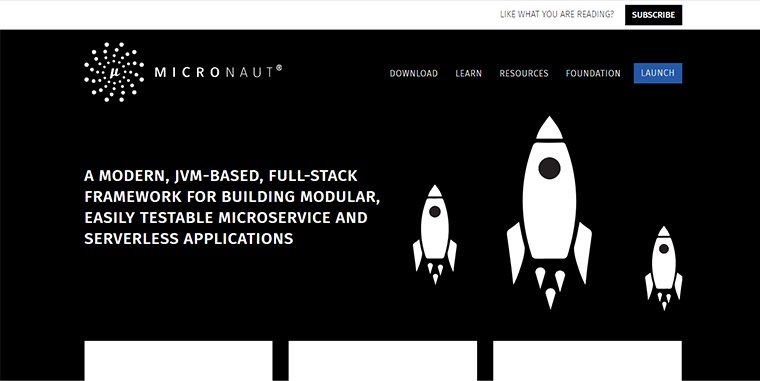
On the Java side, Micronaut is leading the serverless application. Micronaut is a contemporary, Java Virtual Machine-based, full-stack framework for developing modular, readily tested microservice and serverless applications, in case you didn’t know.
Micronaut is a Polyglot framework, which means it can be used to build applications in a range of programming languages. This is one of the best advantages of the framework. Micronaut favors Java (obviously) and Kotlin, the Groovy JVM programming language, at the present.
Micronaut is not just a coding web framework but it is also a performance booster. With minimal coding efforts, you can create impressive and blazing-fast apps for all unique web services. It also resolved all complex browser-based application challenges and with its rich libraries offers faster working java web applications.
3.10 Grails
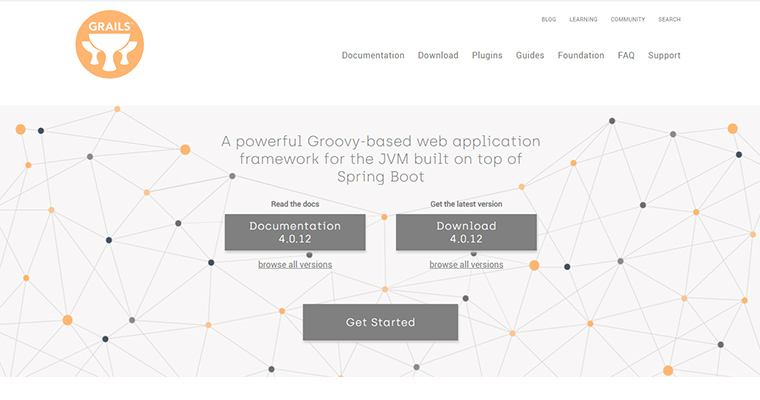
Grails is the best Java framework and is written in the Groovy programming language. Grails is open source, just like other Apache solutions, and it comes with a lot of features to help Java developers. It is compatible with Java syntax making it easier to work with various java technologies and runs on the Java platform. To begin, it provides markup views from which HTML code may be generated. JSON and XML are similarly affected. Grails can constantly develop plugins for the Groove language(i.e an object-oriented language for the Java platform) which is helpful to enhance your own apps for free. This framework is based on the MVC design pattern.
When we use grails, we understand that it is easy to learn a full-stack development framework that can easily help java developers to develop java programs. Using this Java web framework, you can create apps with advanced web interfaces that are perfectly compatible with other java frameworks.
When you use grails, you will always be good with deadlines and time-related projects. Once you use Grails, you won’t find other IDEs attractive. the documentation of this software framework is very clear and deployment is easier with the given references.
3.11 Play

In this list of JavaScript Frameworks, Play is a popular name of JavaScript framework. It is considered one of the most reactive yet interactive mobile frameworks. You can use Play to develop apps that are light-weighted and mobile-friendly. Java programming language and Scala interfaces for desktop and mobile devices. It is frequently compared to sophisticated frameworks written in other languages, such as Ruby on Rails for Ruby and Django for Python.
Play is one of the innovative ways of using JavaScript within your development program. Play saves you from relying on EE standards. You can also ignore all blockages caused because of the slow cycle of development, demands of long configurations, and lower performance. It has several toolkits like Akka, Play framework will amplify the creation of concurrent and distributed applications that are developed & distributed applications on the Java Virtual Machine.
Play is a highly scalable, asynchronous, and lightweight framework that is built in a way that supports almost all types of web-based technologies. This includes REST, JSON, web sockets, and other tools contributing to high-performing app developments. They also have an active community that specifically addresses all problems first-handedly.
3.12 DropWizard
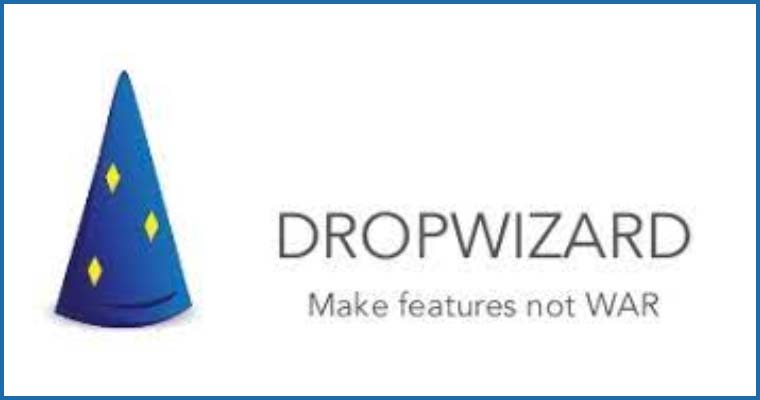
Dropwizard is a high-performing but simple Java framework for quick RESTful web service creation. It’s ideal for developing Java microservices.
The Dropwizard framework combines numerous well-known Java libraries to deliver a fast and distraction-free programming environment. There are various servers that can be utilized such as Jetty servers like Google Guava, Logback, Validator, Joda Time, and a few others.
Dropwizard is popular and is easily integrable as it also uses Jersey, which can be used to create RESTful web services, as well as Jackson, which can be used to parse JSON. Dropwizard can be used as a separate ecosystem including all the dependencies described above in a single package. Dropwizard saves you time by eliminating the need to write code for configuration, metrics, or other features.
Some of the most worthy features of Dropwizard are that it is easy and so lightweight that it can be integrated with all types of Java libraries. You can use it with all types of frameworks since it is easy and can be easily documented.
4. Which is the Best Java Framework For Web Application Development?
Undoubtedly, after seeing these twelve frameworks, you must be confused about which one suits your business best. Well, it depends on the relevance of your business needs and the best-suited Java framework. Technology is moving really fast, and you need to match up the pace with a rapid development framework. These frameworks are fully in charge of all activities from traditional java web development tasks to specific complex browser-based applications. The answer to this lies in the choice you make that will make your development process easier, faster, and futuristic.
FAQ
Which is the Best Java Web Framework?
Ans: Because of its user-friendliness and extensive feature set, Spring is often regarded as a top Java web framework.
Is Spring Boot a Java Framework?
Ans: Spring is a framework for developing applications in Java; and Spring Boot is an enhancement of Spring that provides additional functionality
Which Framework is Easy to Learn in Java?
Ans: Among the many Java frameworks available, Spring Framework stands out as a top-tier, lightweight option for software application development, advancement, and delivery. Hence, it becomes very easy to use.


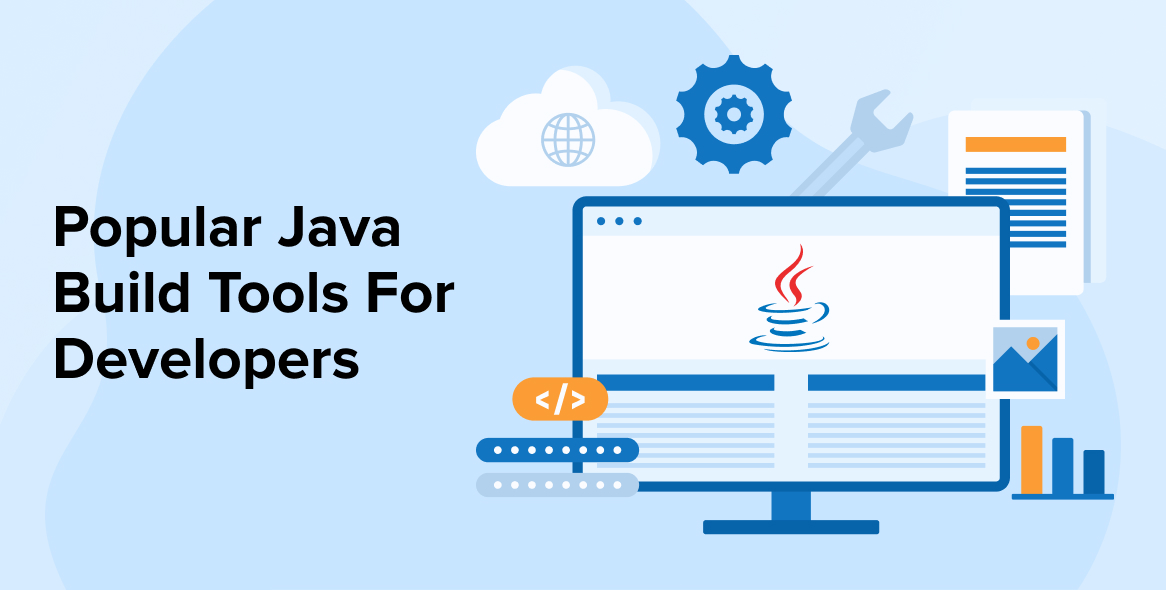
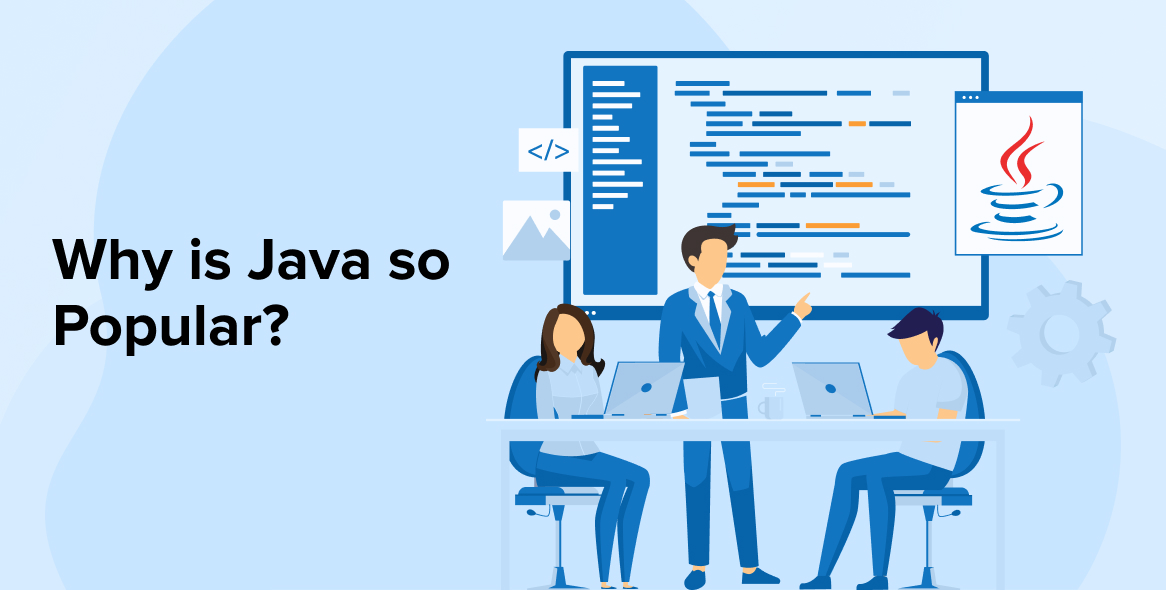
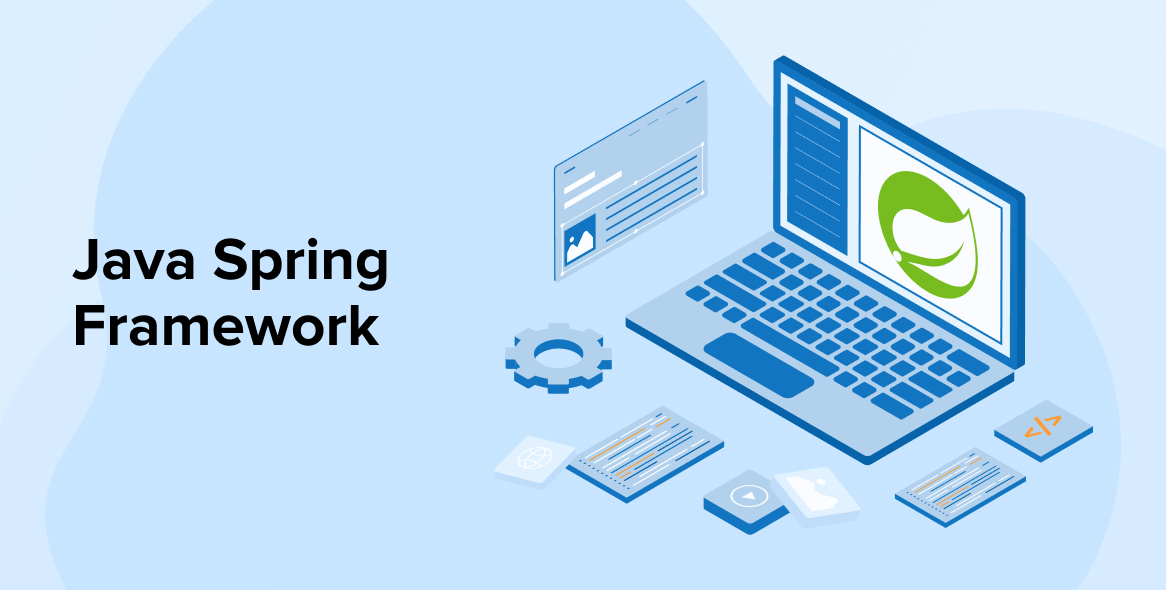

I am going to develop one of my web project but I am confuse that which java framework I have to use becuse there are many java framework available like Spring, Hibernate, Blade, Struts, Google Web Toolkit [GWT], JSF (JavaServer Faces), Vaadin etc. In these article you describe all the framework in depth so Now I can choose the framework which fullfill all my project requirement
As a beginner, this article helps me a lot because it summarizes the key features and benefits of each Java framework, which can help me make an informed decision about which one to use for my next project. Keep sharing!
After seeing these ten frameworks, I now understand how Java frameworks make the development process simpler, quicker, and even more modern. I appreciate you sharing this valuable knowledge.
This blog offers a useful resource for developers looking into Java frameworks, which can be used to create robust and scalable web applications. Thank you for sharing this useful information!
I think the article is a good resource for learning about Java frameworks like Spring, Hibernate, Blade, Vaadin, Micronaut, Grails, and many others. However, I would have like to see more discussion about the pros and cons of each framework.
This article put light on some of the most popular Java frameworks. Java is a rich language in terms of frameworks that have been useful in simplifying and speeding up the development process. These frameworks not only save time but also encourage best practices and maintainability. Keep Sharing!
After reading this article, I can find that one of the many reasons for opting for Java is that it offers great Java frameworks. Java is capable of facilitating numerous simplified coding options with reusable codes. It allows developers to write once and run anywhere, and it makes Java popular. Highly recommended!
This is an interesting article about the Java Frameworks for Web Development Project. The author describes what Java frameworks are and gives detailed information about 12 of the most popular ones. Some highlighted points are that Java frameworks are used to make Java programming easier and that they come in pre-written code sets that you can add to your own code.
Thank you for sharing this informative article! Despite my few years of experience with Java, I found some new frameworks mentioned that I wasn't familiar with. This serves as an excellent resource for those seeking to expand their knowledge of Java frameworks.